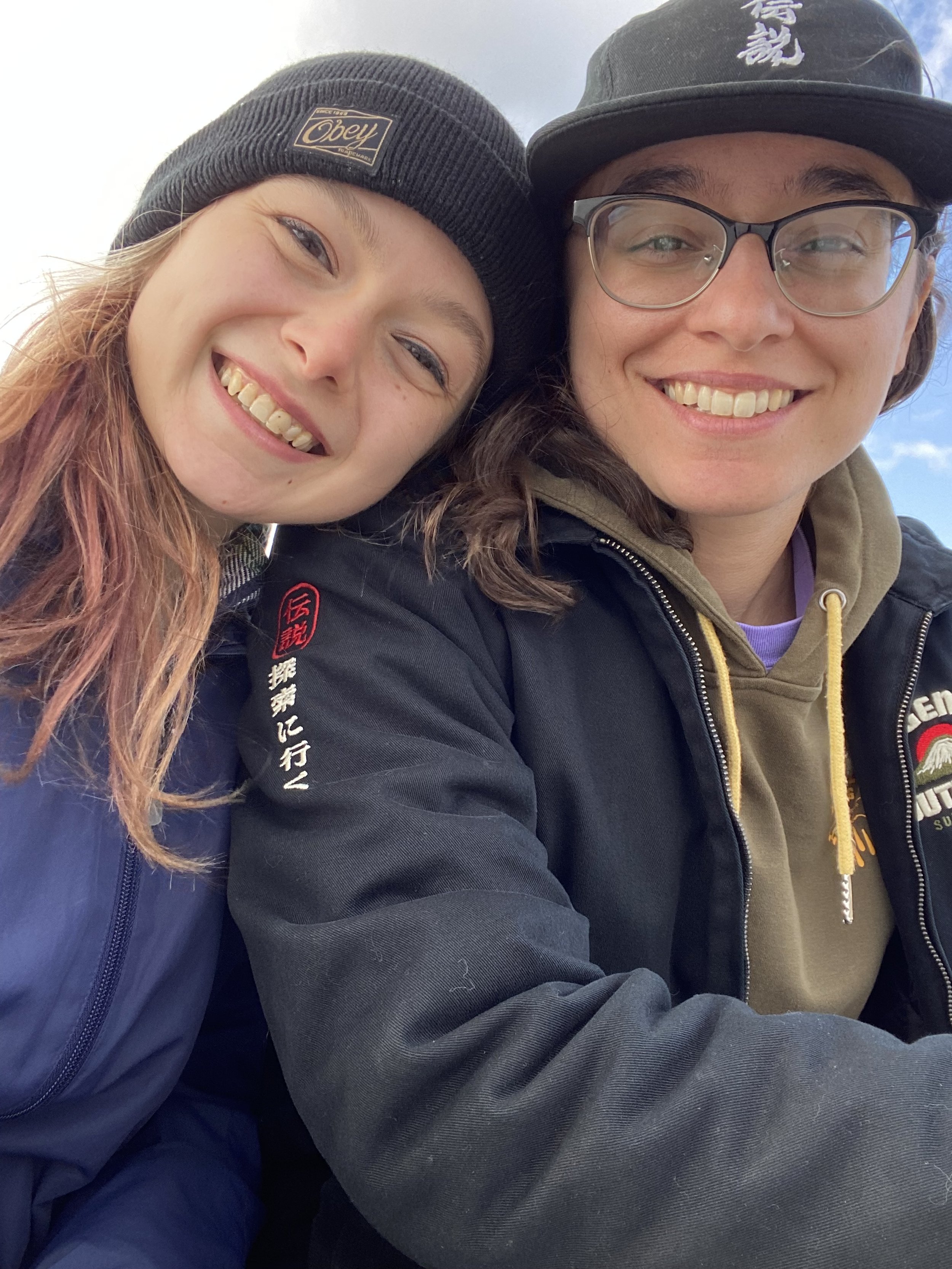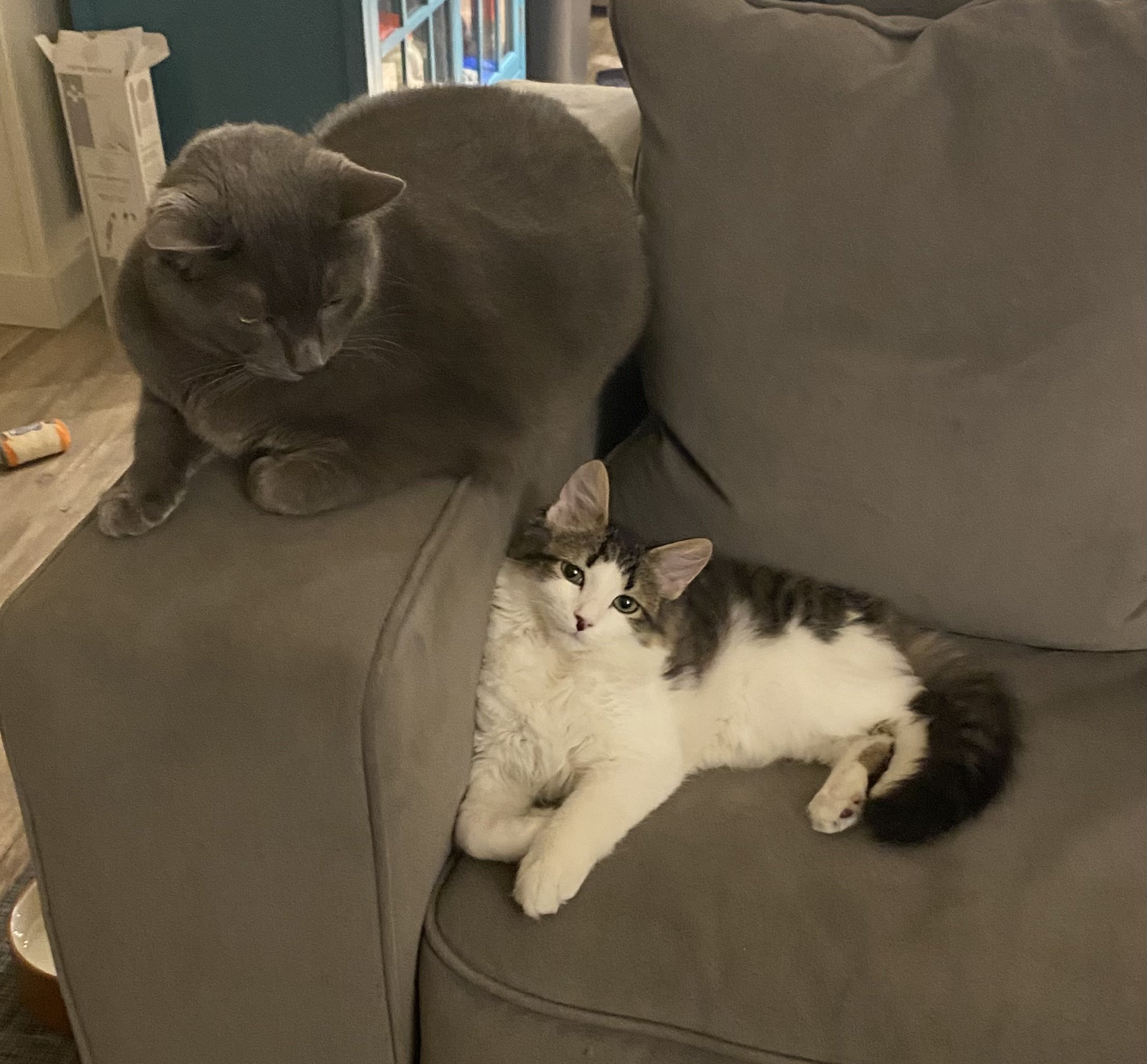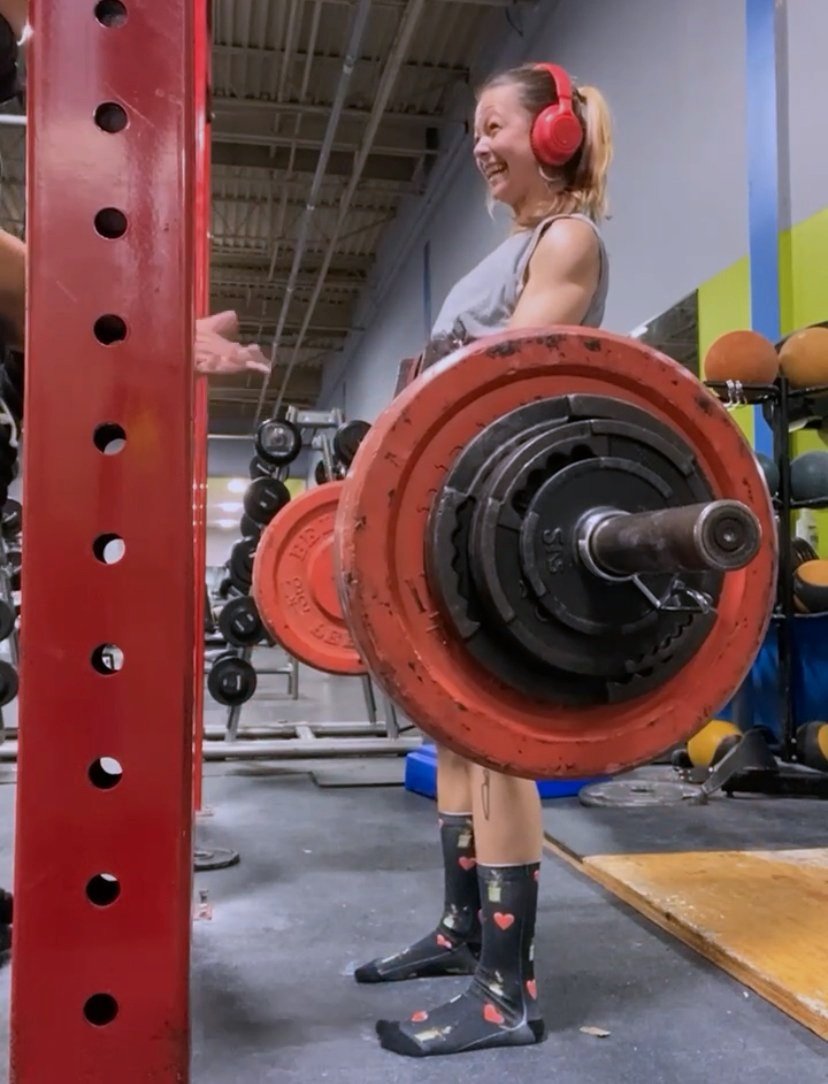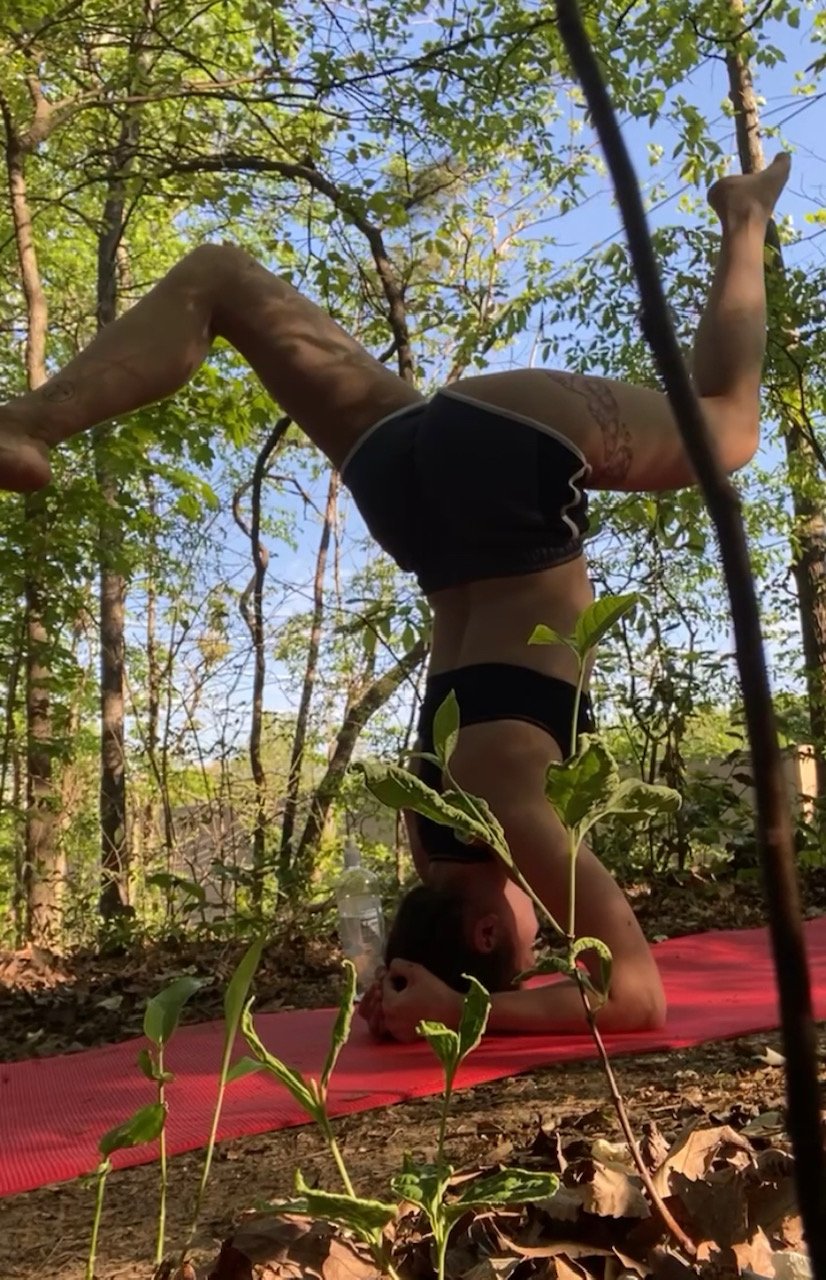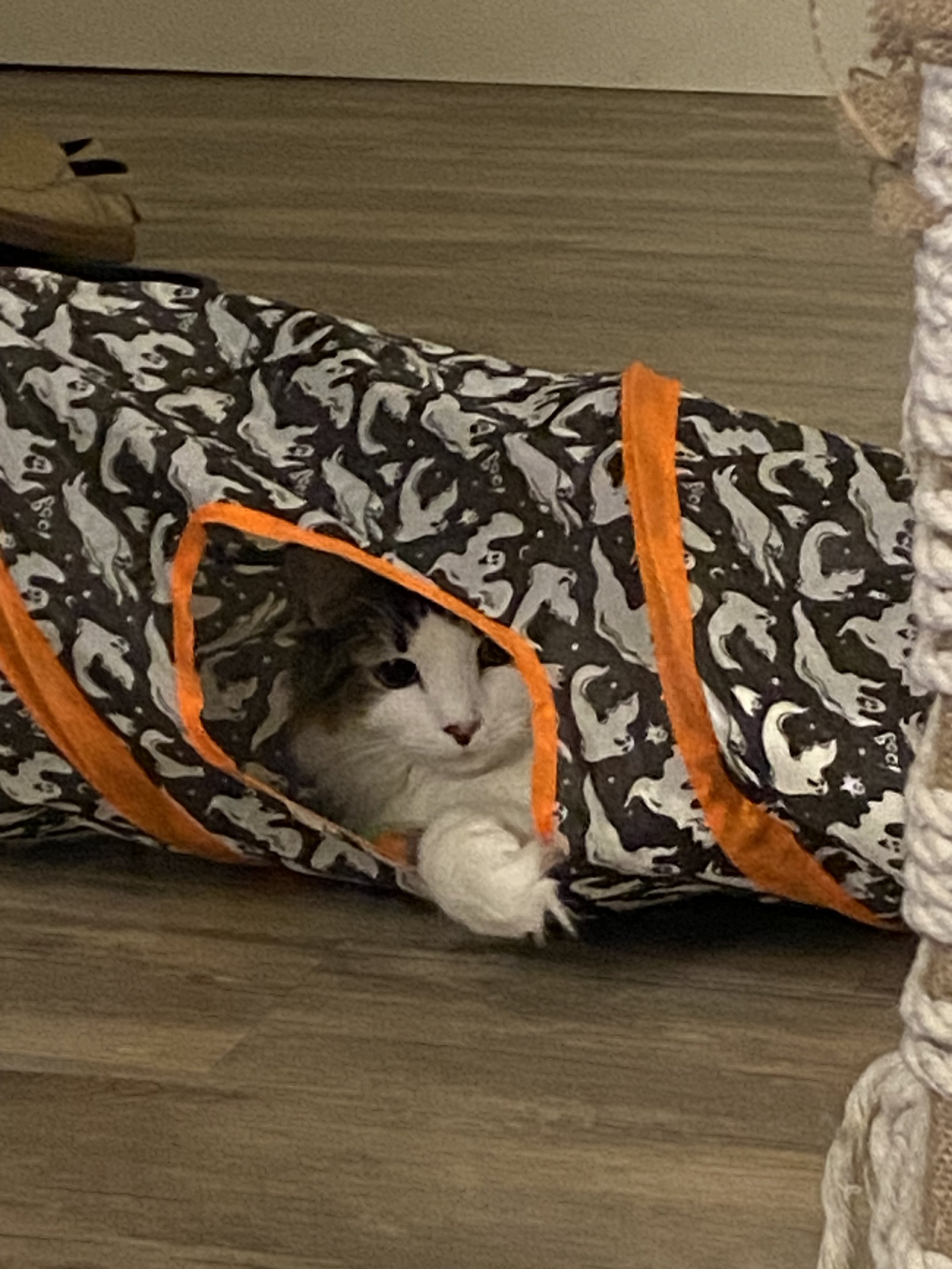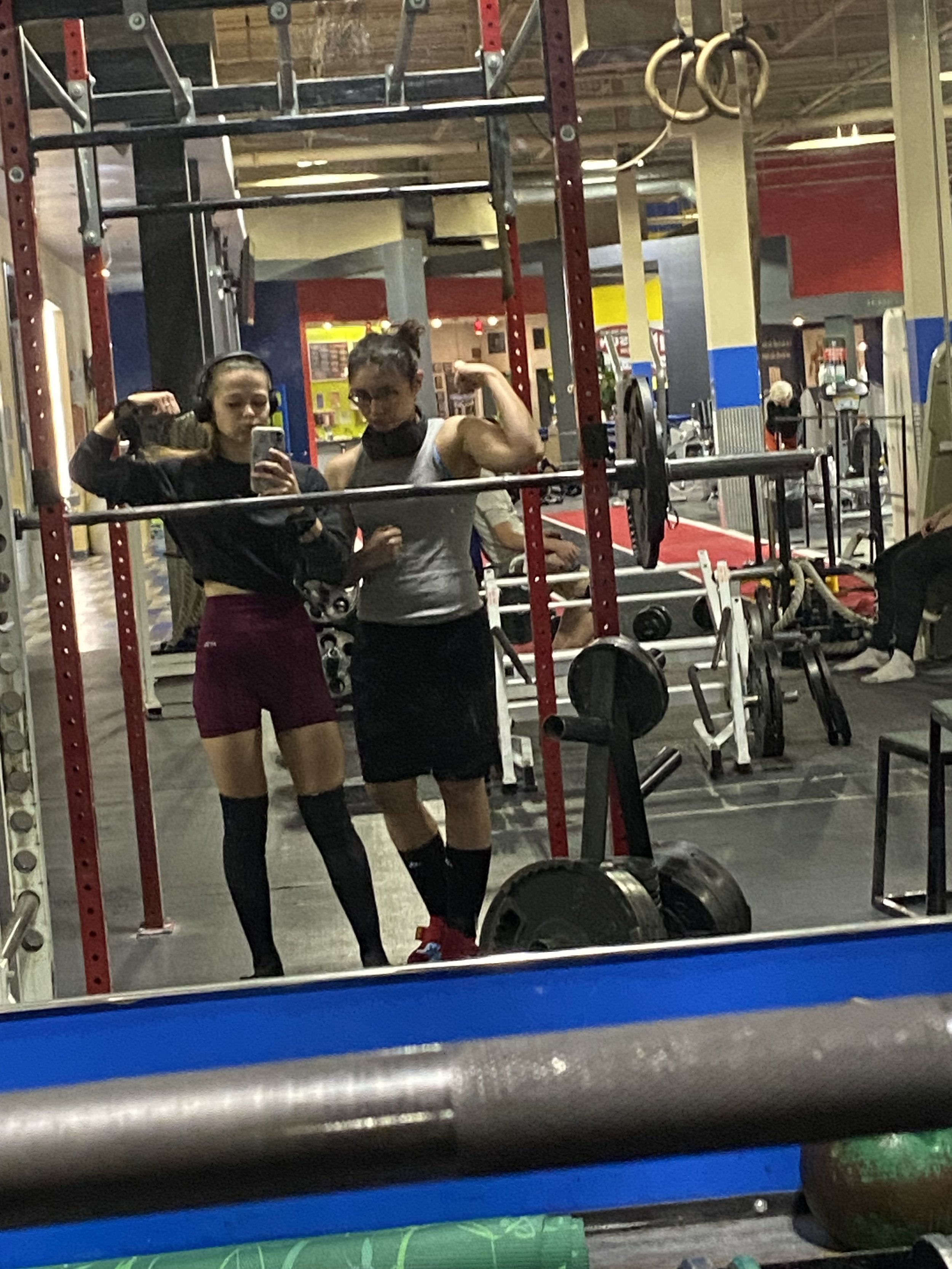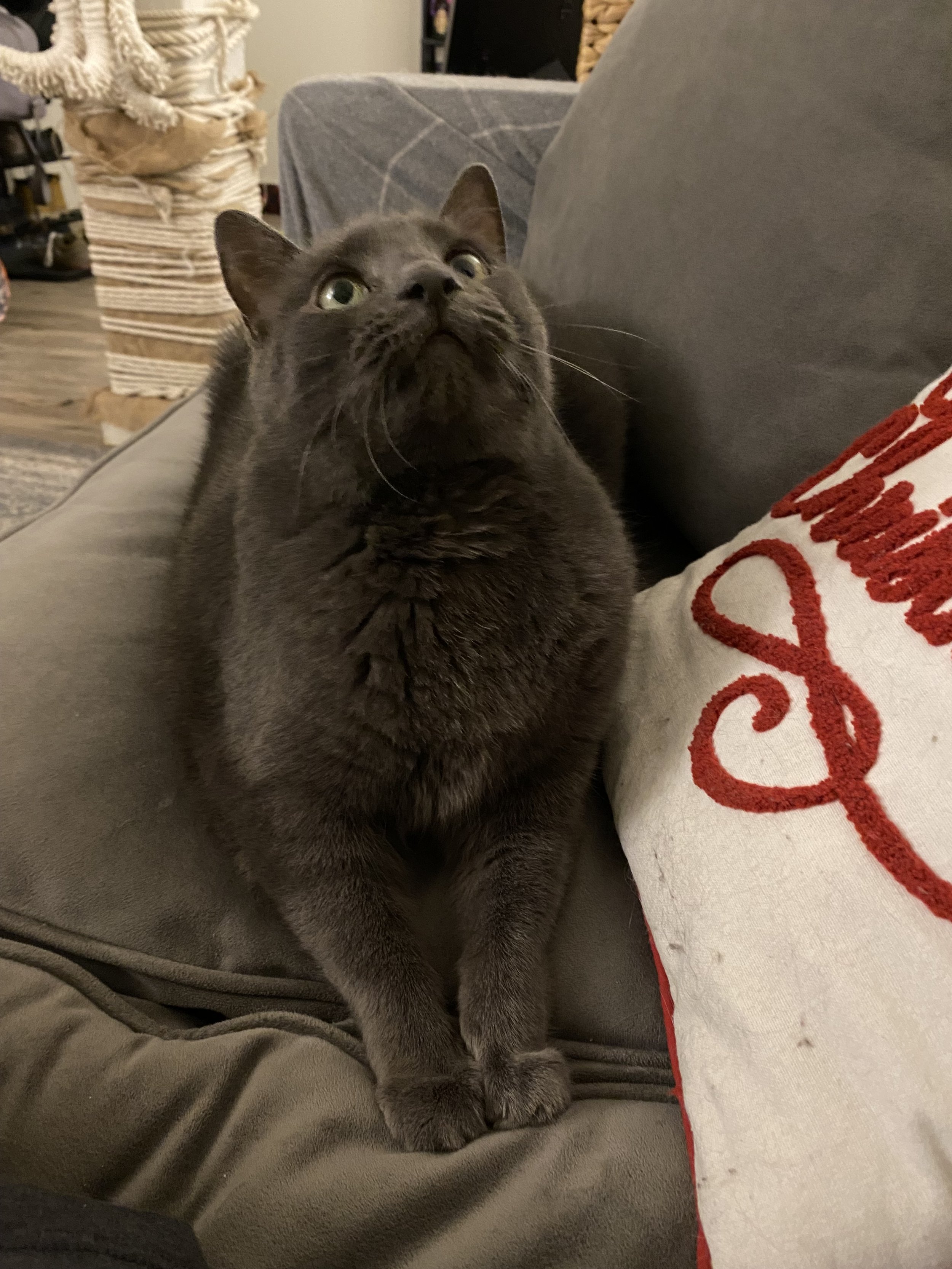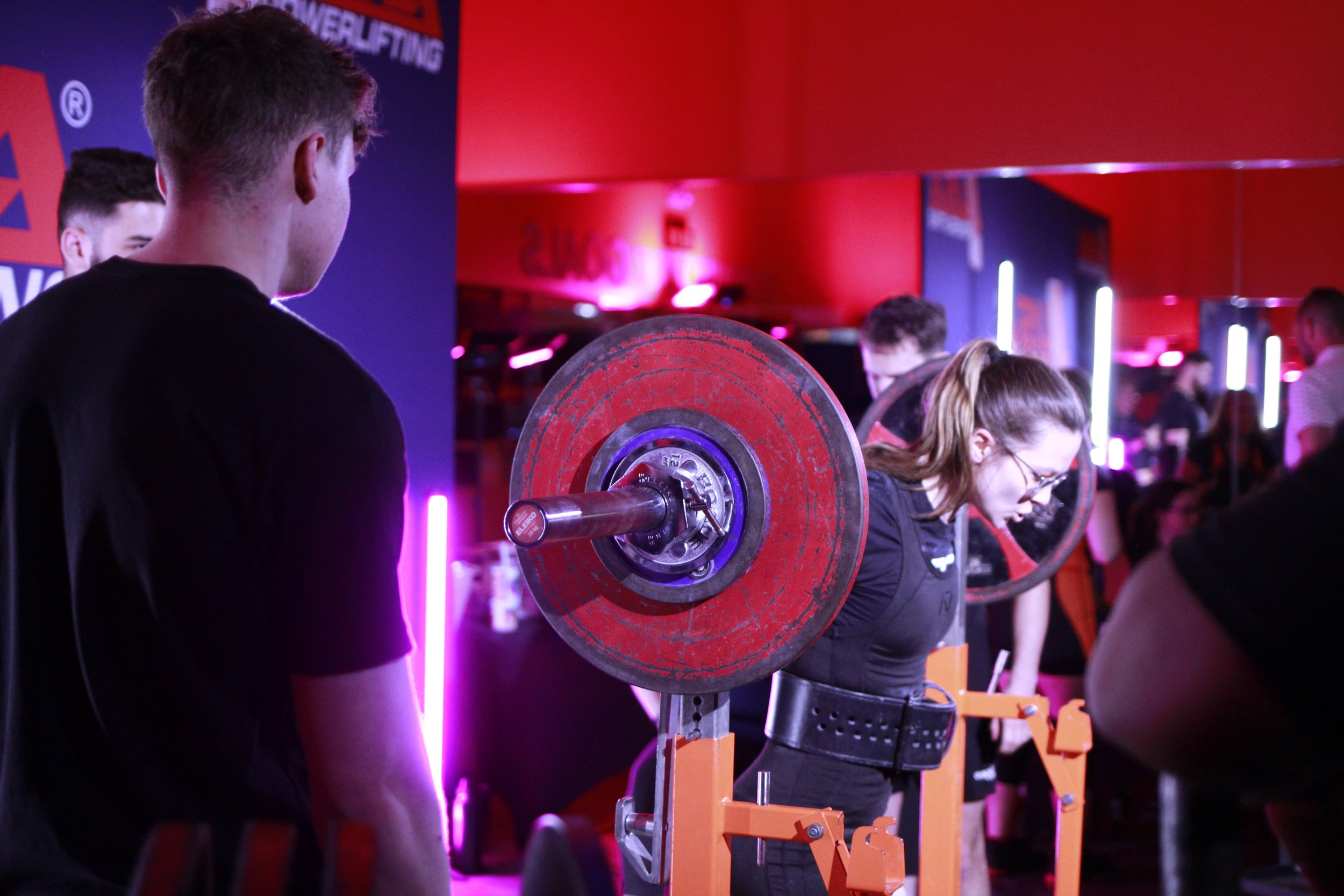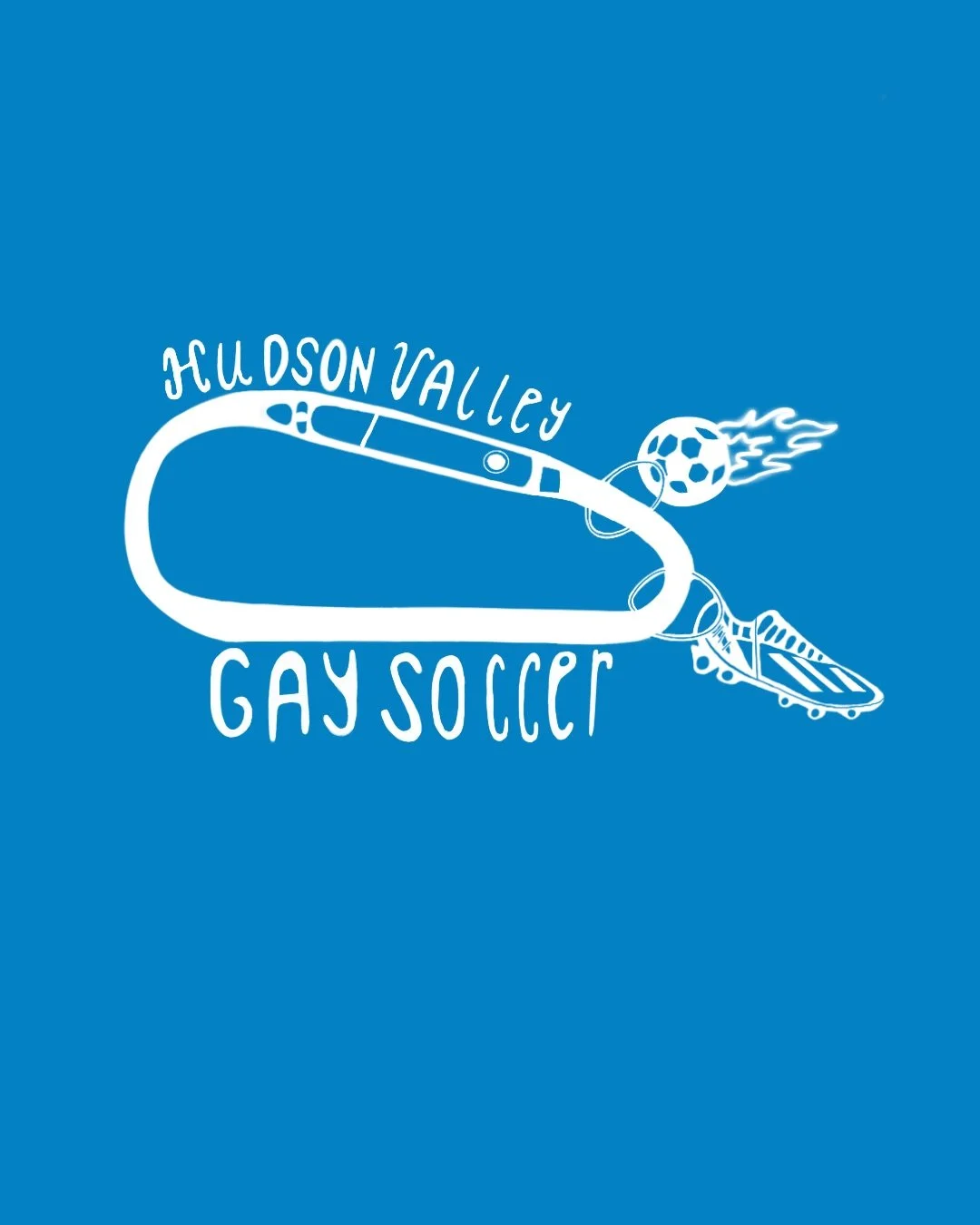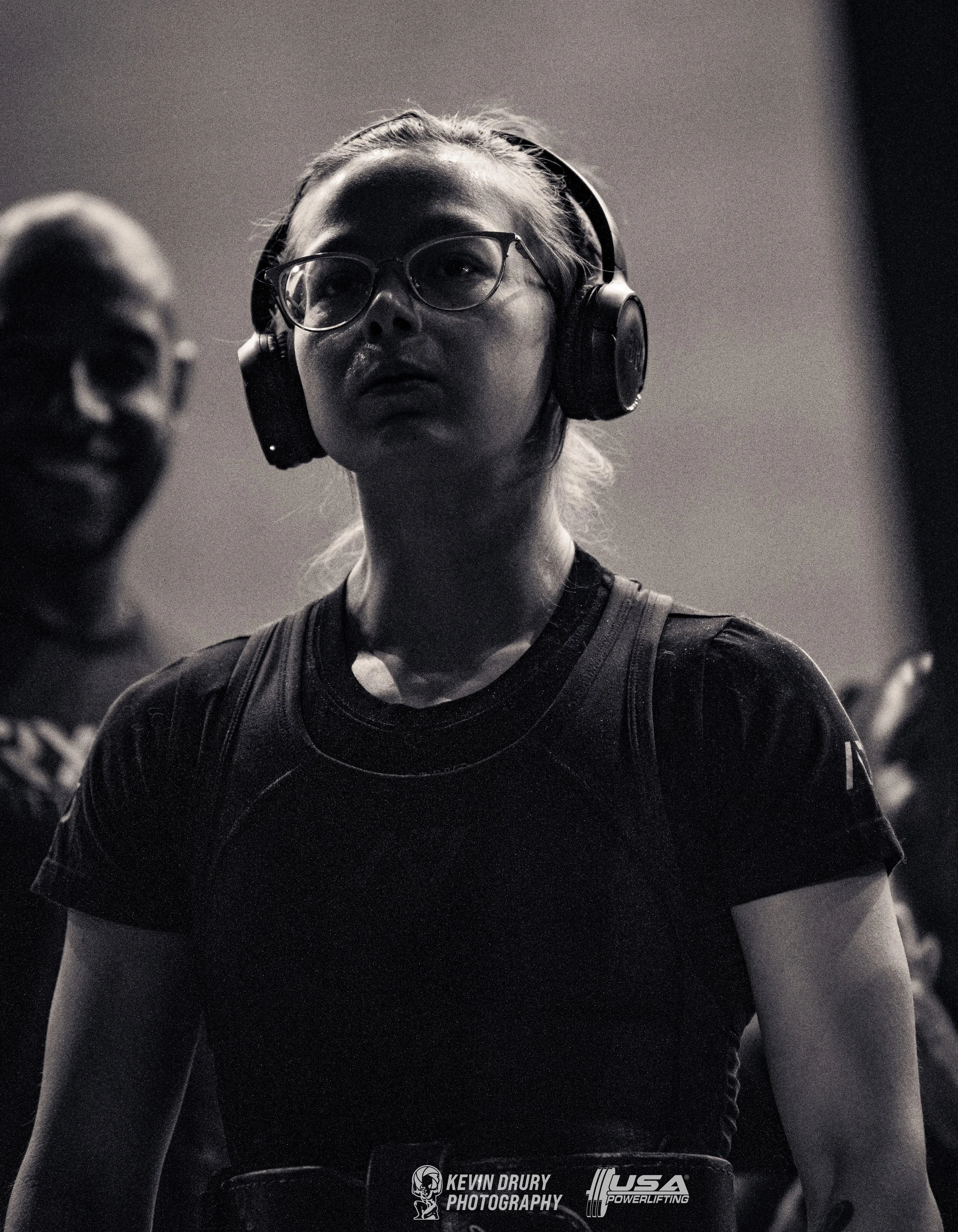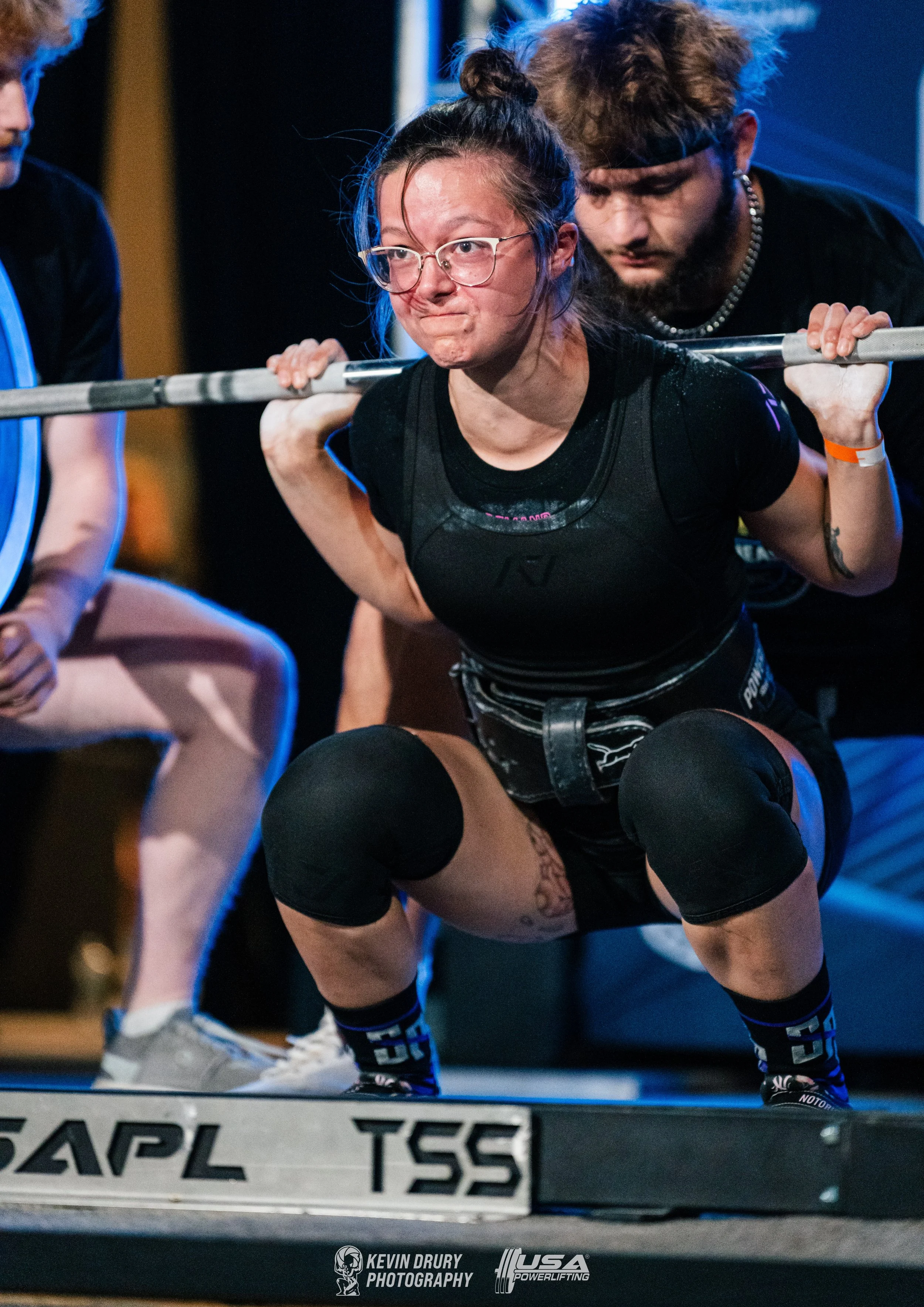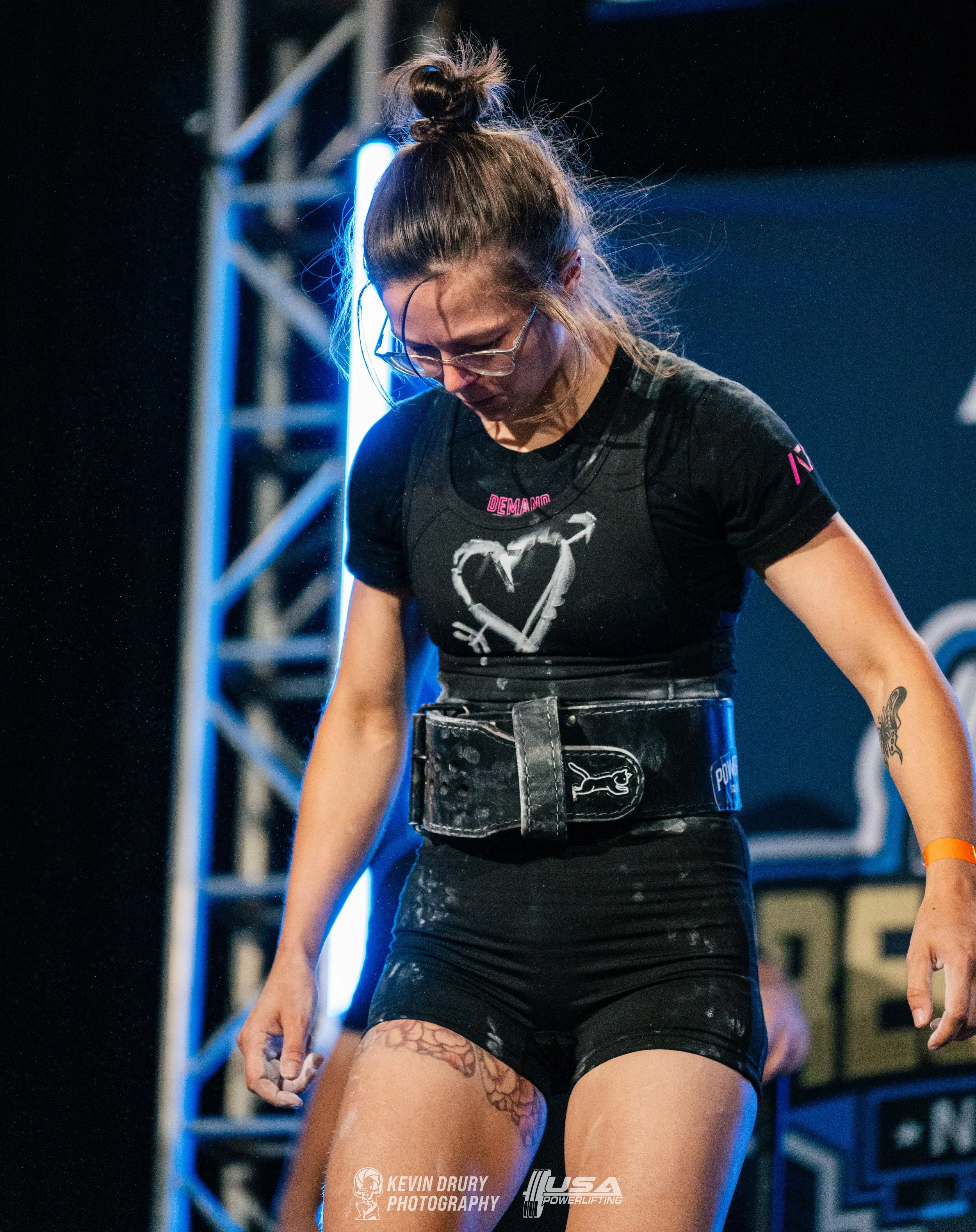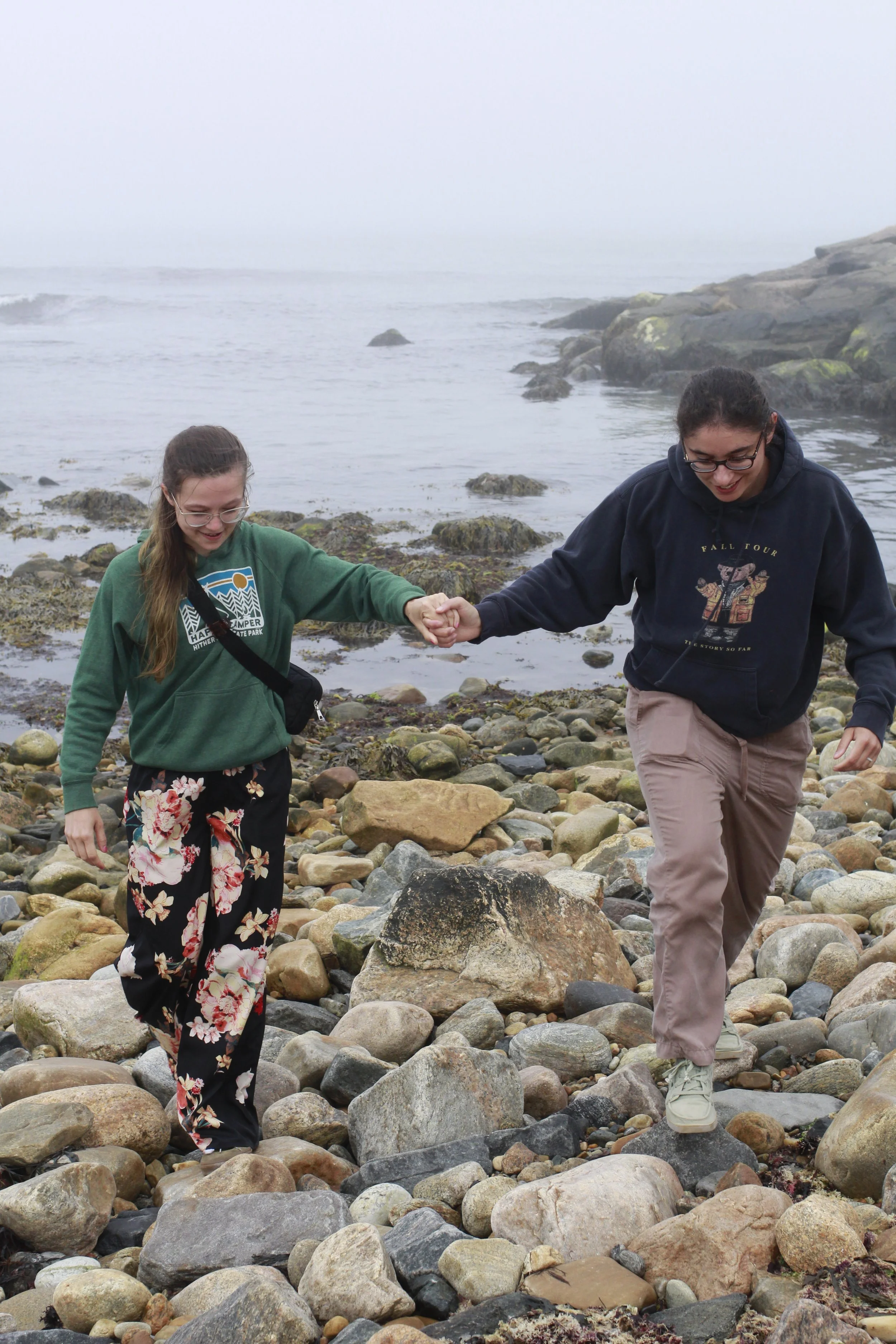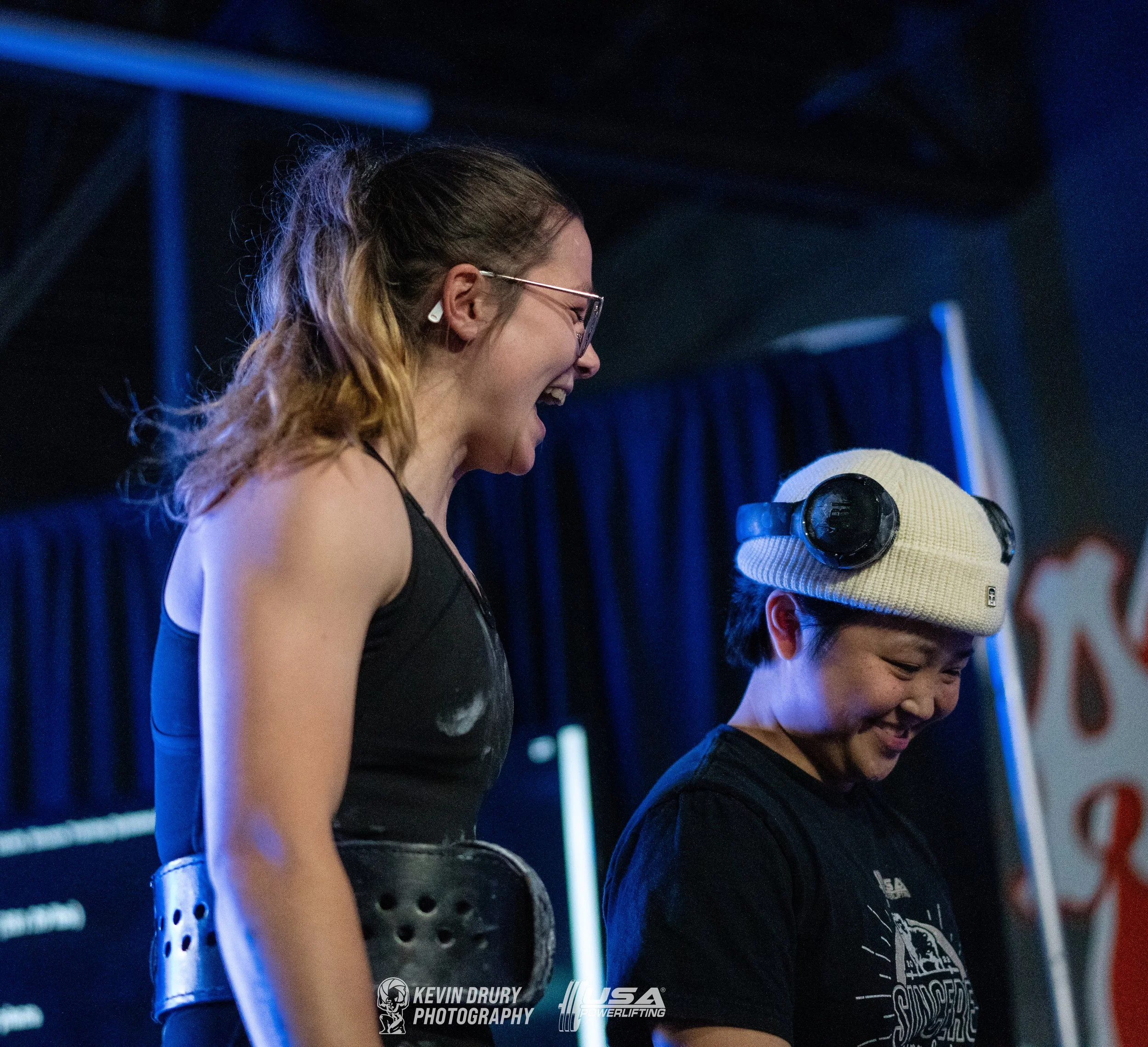meet your coach - carley remsburger
Quick facts
I am a NASM certified personal trainer and have completed Trauma-informed Weightlifting’s Foundations course, The Center for Healings Trauma-Informed Coaching certificate, and the Barbell Rehab Methods Certification. I am currently acquiring my Para-Powerlifting Coaching Certification (level 4) and my Adaptive Fitness certification!
I have worked as a pre-school teacher and kid’s gymnastics coach! My psychology degree was specialized in early-childhood and adolescent development!
I am over 3.5 years sober from alcohol, and over 4.5 years sober from cocaine.
I live with my beautiful wife and our two cats, Cheddar and Skylar.
I played volleyball all throughout middle and high school, competed in Track during high school, and have always enjoyed yoga!
I have competed at the NY Ladies of Iron and the Sincere Training Systems Classic III!
My hobbies outside of lifting include playing guitar and piano, hiking, and exploring or going on adventures with my wife!
As a trauma-informed trainer, I also aim to be inclusive and strive to create an open space for all in my practice. I’m hoping to host events in the future elevating unheard voices in the fitness world either virtually or in and around the Hudson Valley! (If you’d be interested in being apart of something like that, please reach out!)
MY WHY.
I tell folks all the time- “I use powerlifting as a sort of therapy” and so often I hear back, “I’ve never thought of the gym like that.” The gym is a chore, the “brushing your teeth” of all activities. And I can see so clearly why that is- where I grew up, we did the Presidential Fitness Test, pitting everyone against one another and hanging huge banners in the hallways depicting the top 5 in every category. We were told “This is for your HEALTH!” and then given a tiered ranking of who was winning at “health”. You can see it in movies where there’s a gym class scene- the jocks are dumb and big, and the nerds are bad at everything. The gym teacher is either a loud drill sergeant man, or a loud drill sergeant lesbian. Fitness is WORK, it is EFFORT, it is PAIN! Damn it!
I love shattering this illusion. I love telling folks that I bring in yoga principles to my lifting every time I step up to the barbell. I love to tell folks about the sweet interactions I have with the ladies and queer community at my gym. I love to tell them how many times I’ve cried alone and with others while at the gym, and how absolutely fine it is. I didn’t start out feeling this way, I was led in softly by my amazing wife and had a predisposed background to sports and activities.
So therein lies my first “why”. I am privileged in the vein of fitness and physical health. Sports were celebrated in my home growing up, accomplishments praised and failures dealt with in kindness and understanding. I knew movement well, I knew competition well, and I generally didn’t find anything too disagreeable about it all in the first place. I have enough money to support buying a gym membership, and before that I lived in a safe enough place to bring my yoga mat outside and do my practice. I have never struggled with access to clean water, and even when things are tight I still get enough calories in. I have physical, financial, and emotional safety when it comes to exercise and fitness.
The CDC states that over 2 million Americans live in homes without running water or basic plumbing. 7% of Americans do not have Health Insurance. If you live more than a 20-30 minute walk from a gym or fitness facility, you must rely on either what you have at home, a car (an expense some folks simply cannot afford), or public transportation. You then have to be in a safe enough area where you can commute that far without being in danger. This is all assuming you even CAN afford a gym membership in the first place. Gym clothes, the time to workout, the ability to shower and be clean after a workout, eating enough protein are all fairly low on the list of priorities for folks who are poor, struggling with addiction, are caregivers to others, etc. Even something as simple as having safe footwear to exercise in can be a cost folks cannot spare. BIPOC and those with low-income are at a MUCH higher risk for all of these situations, because our systems all primarily cater to upper-class, cis, white folks. We can see this in how little access there is to health food stores, fitness facilities, and well maintained parks in low-income areas. The barriers get TALLER and taller as these identities intersect, and can make fitness feel unapproachable and impossible. I think of how many people are in these positions and understand easily why there is such a high rate of obesity, diabetes, cancer, chronic illness, and depression in this country.
I hope to open the door to fitness for these groups of people and bridge the gaps that our system creates for us. I utilize sliding scale payment options for many different groups of people, I offer outdoor and at-home based workouts, I offer virtual workouts, and I meet folks exactly where they’re at. It is so immensely important to me that my work stays consistent to my beliefs and dreams- that everyone feels like they can move, safely, so they can explore healing in a multitude of different ways.
My second “why” comes from being a part of some of the groups I am hoping to help raise up. My experiences in life have led me to where I am now, and rarely have they been extremely positive. I am over 3.5 years sober from alcohol, and over 4.5 years sober from cocaine and other substances. I experienced sexual abuse at the hands of a peer as a young child, and was sexually abused in my late teens and early twenties by my long-term ex. I have been sexually assaulted multiple times by many male “friends” through the years. I experienced both active suicidality and passive suicidality throughout my entire life, and self-harmed from the ages of 12-16. I was diagnosed with Major Depression and Generalized Anxiety at 17 years old, and later diagnosed with C-PTSD in 2020. All of these things compound to cause some interesting and hard to deal with symptoms.
When I was disassociating as a young kid, trying to process but never safely able to, I knew I enjoyed sports and fitness for the escape of it all. I played Volleyball consistently throughout middle and high school, and even attempted to keep playing deep into my addiction in Community College. Unfortunately, as my interest in substances grew, my desire to move my body in grounding or healthy ways depleted. I didn’t do much for a few years, except randomly show off that I could do a push-up or a pull-up at parties, go for a run every now and again, or tag along to the gym with my friends (with a PBR in my tummy, of course!). Fitness was not a focus at all. I started drinking around age 14, smoking cigarettes at 15, tried cocaine at 19 and spent the years up until 25 doing whatever I could get my hands on- most often: amphetamines, muscle relaxers, and LSD.
When I moved to Atlanta, I was years into a “drinking habit” that I could not admit was alcoholism- let alone address the slew of other substances I’d been abusing my body with for years. The parties were over, so the other substances really slowed down- but I drank every single day. I spent my money on cases of PBR, white claws, Trulys, and liquor bottles. I went to the bar at least once a day- every day. As a result, I was using cocaine to get me through the two jobs I was working to support my habits- a breakfast serving job, and a bartending gig right next door to my apartment. It didn’t help that I had a reliable cocaine hookup living directly across the block from me, that’s for sure. I spent my days in a haze, going for runs sometimes to work out my energy, walking the dog to get away from my old roommate, and generally wondering where my next drink would come from.
I did not fall out of these habits easily- and I carried them well. I still seemed fine on the outside (I know some folks who knew me through the years, and my family, will be surprised to read this all… Sorry, y’all.) I was quite good at holding myself while high, drunk, or both. This would not be helpful in the long run, and I wish so often I had hid it more poorly throughout the years so someone would have shaken me awake sooner. The only thing that truly guided me out of the dark box I put myself into, was my wife. I feel so immensely grateful that she saw through the layers of protection I put around myself in the form of these addictions. She got me to start practicing yoga again, and to really find peace in those moments. She would Facetime me on my walks and runs, and encourage me to go outside on virtual “dates” with her (even when it was snowing where she was, and 70 where I was!). These small encouragements were actually the start of life saving care.
She moved me out of Atlanta, she shook me awake, and put a mirror up to my face so I could finally make some changes. In doing all of this- she introduced me to lifting. I started to realize that when I was in the gym, I was focussed on myself and my body and the way it FELT for the first time in so many years.
I’d like to take this moment to talk about the way trauma- specifically childhood sexual trauma- lives and maintains itself in our bodies. To be abused sexually as a child is to have every last ounce of your agency taken from you in those moments. You are already helpless- 5 years old and unaware of not only the horrors of the world, but what to do when faced with the horrors of the world. To be abused sexually by a PEER at a young age adds in layers and layers of emotions and shame that may take a lifetime to peel back. It is, perhaps, a rare situation. It’s not something I care to look up the statistics on- maybe I’m not there yet. But I do know that I am not alone in having experienced these things. I do know that when we are thrust into these situations as children, our bodies try to protect us. Our nervous systems become primal machines, working hard to create a safe environment. For me personally, my protection was disassociating. This coping mechanism, something your body may use unknowingly, was all my little mind could manage to do to protect me from what I was experiencing.
Disassociation brings us out of our bodies- it disconnects us from the source. Instead of digging our feet into the ground, we float up above, watching like a third party viewer. If your brain and body used dissociation during stressful events as a child, that mechanism can show itself later in life when stress presents itself again. I remember a time in college, after a particularly bad night of sexual abuse, disassociating while driving to class. I gripped the wheel and drifted away from the road, feeling my mind wander to where I couldn’t reach it- until the rumbling of my wheels on the shoulder forced me to rip the wheel to the right place, narrowly avoiding a crash. I pulled over and stared over my dashboard for some time. I didn't understand that the stress I had experienced the night before predisposed me to a heightened nervous system.
“Fight, Flight, Freeze” are commonly seen as our stress responses- but rarely are “Fawn and Flop” ever discussed. Folks who are in a heightened state, where their nervous system is ready to react to a perceived threat, will follow one of the 5 paths in their reactions. Childhood trauma survivors often tend to freeze and fawn, as they do not have the agency or ability to escape abusive situations. This is not 100% the case for every single person, and trauma affects each individual SO completely differently. These reactions to heightened nervous systems cause us stress, release cortisol, exhaust us, and can become familiar states of existence causing long-term harm to our bodies and life.
Like I said earlier- once I had moved out of Atlanta, my wife began showing me how to lift with dumbbells and barbells in her basement gym. We started going to Planet Fitness pretty regularly, and before I knew it I was in the gym at least 2-3x a week. It felt incredible to spend time having something to focus on instead of blindly reaching for a drink or high. I started to really enjoy the process of becoming stronger, and what it felt like to finally feel really physically capable again. I was lucky enough to meet my incredible coach Ava at the gym over 2 years ago, who showed me the ropes and began my deep love for powerlifting. It intrigued the HELL out of me to see a woman deadlift so many plates. I thought, “Wow… I think I could do that too.”
I’ll forever think back to that moment and know how vital it was to my healing. Powerlifting is what truly taught me to ground into myself, to listen to my body even more so than yoga. I had to establish mind-muscle connections, unknowingly reestablishing connections that trauma had ripped away from me years ago. I would cry after sessions, the energy release felt overwhelming and honestly terrifying a lot in the beginning. I would squat through alcohol cravings, and then cry on the bench before I started my next lift. Lifting gave me the chance to finally listen to my body, to hear it say, “I WANT TO BE HEALTHY!” over and over again. The alcohol, the drugs, and ultimately the trauma living in my body kept this piece of life from me. It kept movement from me, it kept grounding from me.
We cannot heal or process in freeze mode. We cannot easily be kind to ourselves in a cruel and unjust world. We cannot control so many things around us- but we can control our bodies, minds, and spirits. We can start from the inside and hope it spreads and seeps out. We can tackle what is inside of us if we are finally given the safety to do so. I do this all to give folks the safety and space to heal. I feel so honored and lucky to have been given the chance to heal from trauma and to find sobriety- to have a support system of people who push me towards the light everyday. But I do not forget how many people do not have the jumping off point, the open door, the will to keep doing it all alone.
So that’s my “why”. I want to give folks the opportunity to succeed, show them the first step in changing their life, to be the ribbon-cutting of healing and processing. I want to show folks that we can panic, we can feel anxiety, we can feel our wounds so deeply- and we are still safe. We still have the power to overcome.
Powerlifting grounds me and has shown me who I always want to strive to be- just better than I was yesterday. I would love to share everything I’ve learned with you, so you can feel this power too. You have it inside of you- the power and strength. We just need to wake it all up, bring it to the surface, and revel in it.
“Recovery unfolds in three stages. The central task of the first stage is the establishment of safety. The central task of the second stage is remembrance and mourning. The central focus of the third stage is reconnection with ordinary life.”
